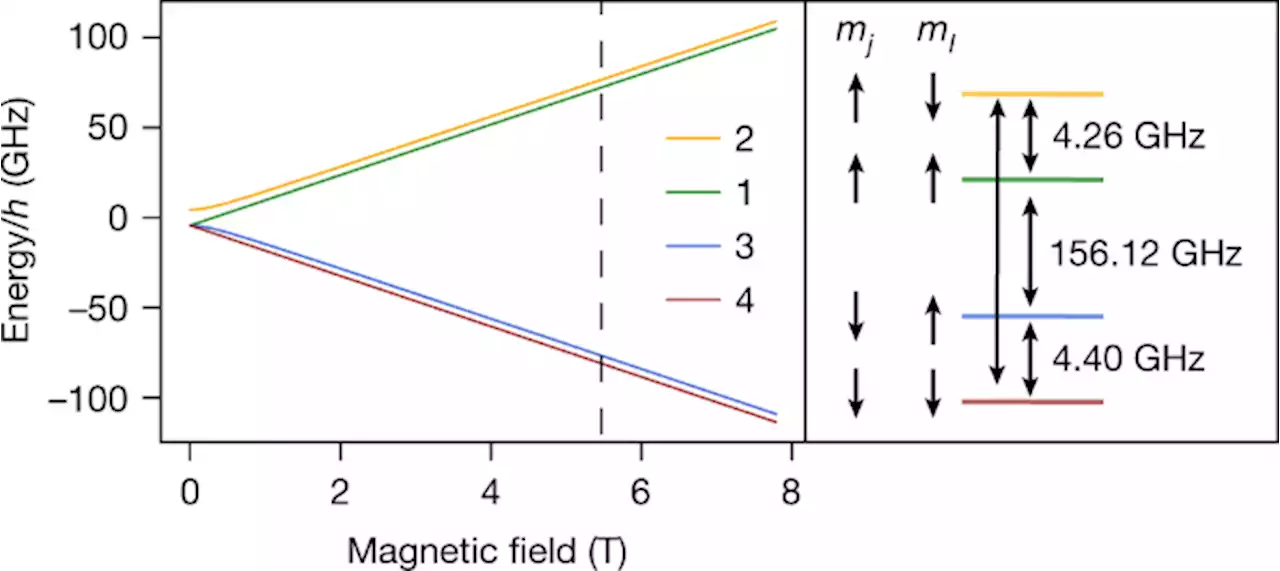Measuring the hyperfine structure of a single helium-3 ion in a Penning trap enables direct measurement of the nuclear magnetic moment of helium-3 and provides the high accuracy needed for NMR-based magnetometry.
is placed in a 5.7 T superconducting magnet and is in thermal contact with a liquid helium bath. In the analysis trap a nickel electrode creates a magnetic inhomogeneity that enables detection of the hyperfine state, as described below, but also limits the precision with which the ion’s eigenfrequencies and the transition frequencies can be measured due to line broadening
. These frequencies can be detected with high precision in a second trap, the precision trap , which is separated by several transport electrodes from the AT so that the magnetic inhomogeneity is smaller by a factor of 10). A measurement cycle starts with determining the initial hyperfine state in the AT. The ion is then transported adiabatically to the PT, where the cyclotron frequency is first measured to determine the expected hyperfine transition frequency.
